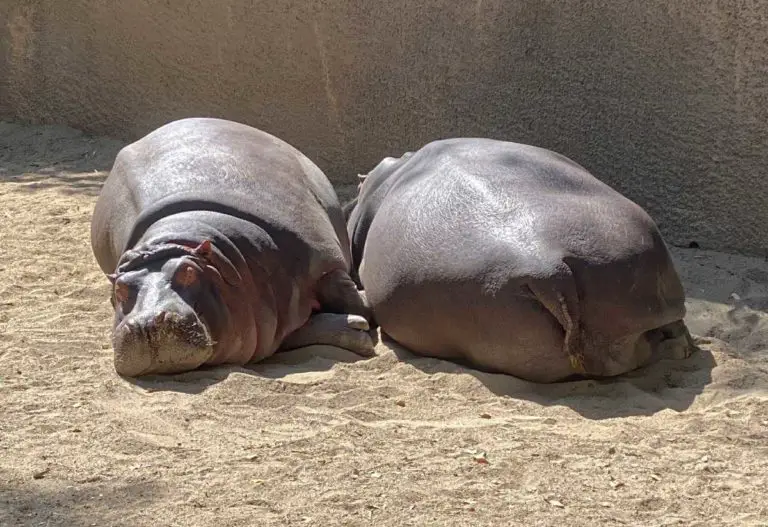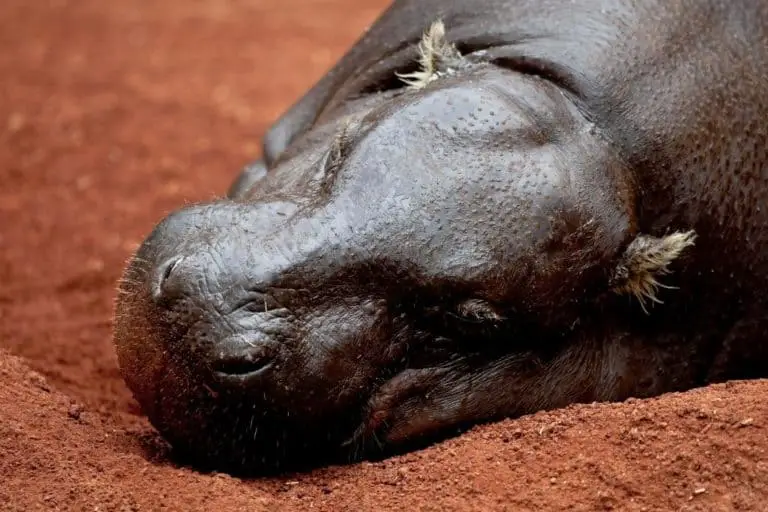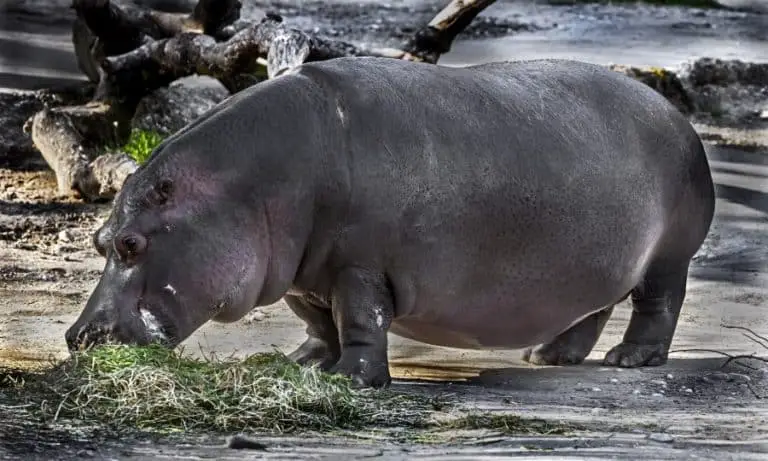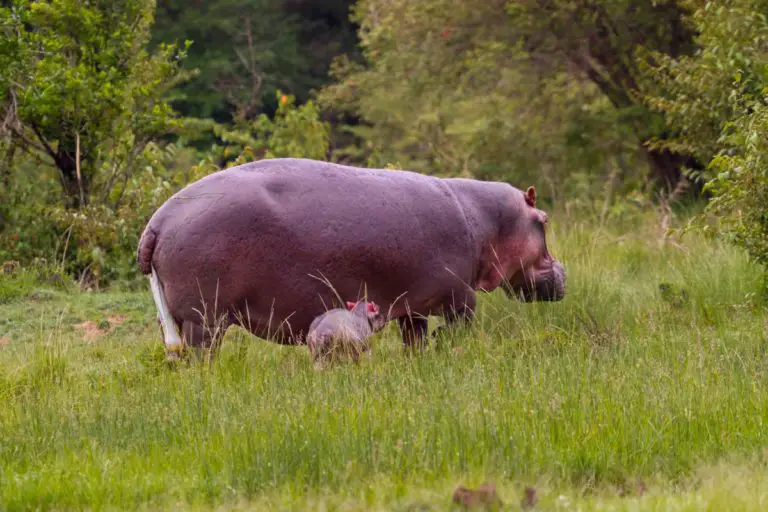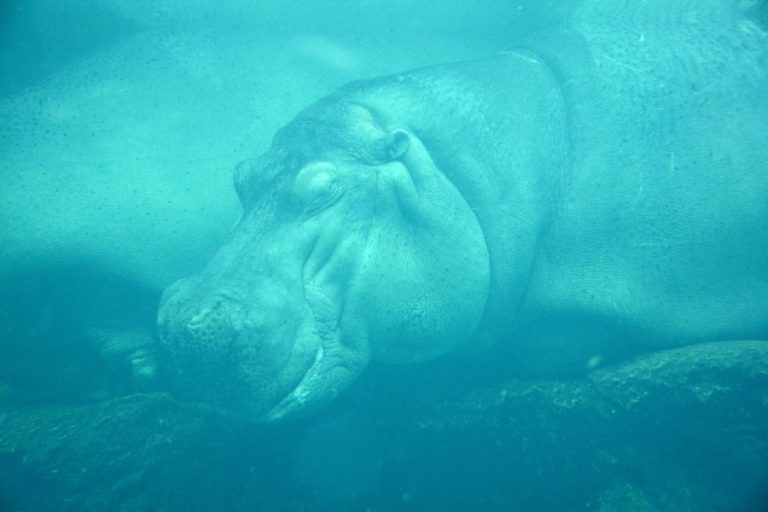Are Hippos Related to Rhinos?
Hippos and rhinos are closely related, yet are they indeed?
Rhinos are more closely related to horses than they are to hippos. Because of their similar appearances and behaviors, they may appear to be close relatives.
Both animals can travel in groups, stay near water sources, and share a similar body shape.
The most significant difference between these animals is that hippos have a prehensile lip, allowing them to grab grasses or branches and eat while standing in one place. On the other hand, Rhinos graze and eat similarly to cattle.
These traits are related because both animals live near rivers and grasslands, which provide high-quality food sources within easy reach.
What are Rhinos?
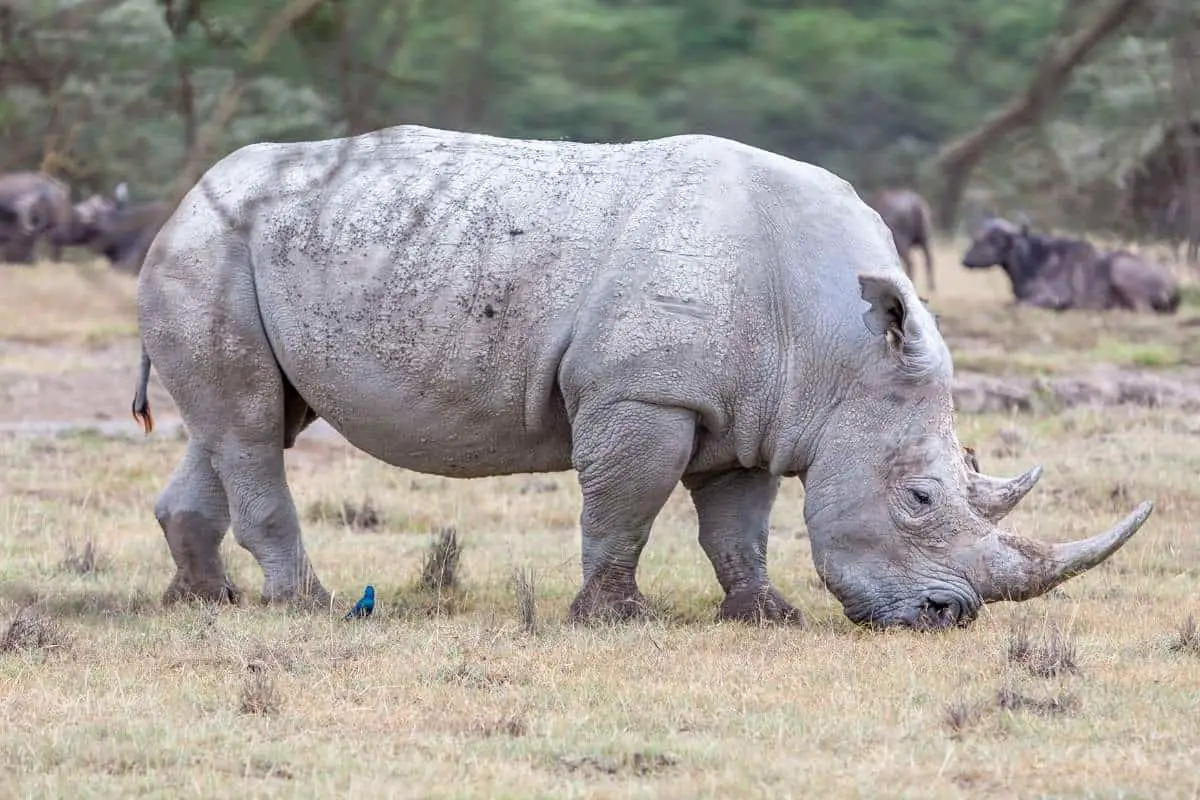
Rhinos are Mammal Species that belong to primates. They have large and thick skin and often use their horns on the front of their head like a protective shield.
They can weigh between 1,720 and 7,920 pounds and grow up to 6.3 feet (White Rhino) in height!
Since they live in hot Savannahs, they use their body size to keep themselves cool.
What are Hippos?
The hippopotamus is a mammal species that belongs to the Perissodactyla order.
A unique feature of the Hippo’s body is barrel-shaped bodies and teeth adapted for chewing aquatic plants. Male hippos can grow up to 5.4 feet in height and weigh between 3,500 to 9,920; females are just 2/3rds the size of males.
- Hippos live in groups called pod or bloat.
- They have territorial fights to claim territory for feeding or mating.
- Hippos spend 1/3rd of their lives submerged!
- Hippos spend a significant part of their lives immersed in rivers and lakes.
Characteristics and adaptations of Hippos and Rhinos
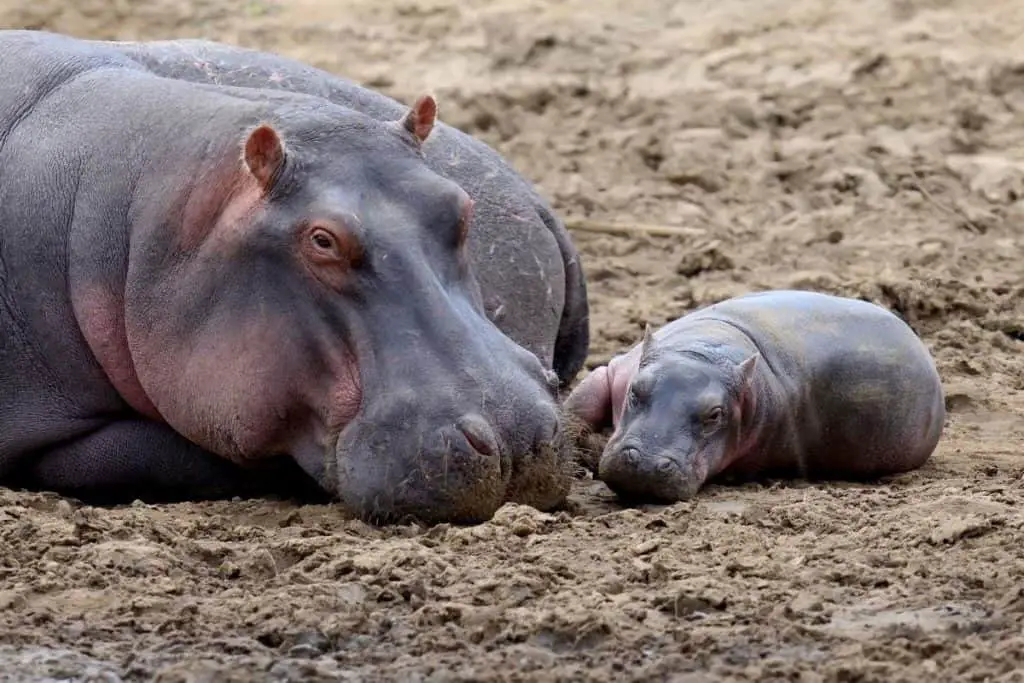
They both have similar body shapes, but their teeth are very different. Hippos have broad molars, which are adapted for chewing aquatic plants.
On the other hand, Rhinos have little pointy teeth used to bite grasses, twigs, or branches of trees.
- Hippo’s ears can close underwater. They have a good sense of hearing and smell.
- Hippos also have excellent eyesight, but they do not have good vision when it is dark.
- Hippos spend most of their time in shallow waters with dense vegetation to hide from predators such as lions.
Hippos have a highly aggressive behavior and charge other species or objects by throwing their body weight.
These animals spend most of their time in the water bodies during hot days, so they do not sweat to cool themselves down.
- Hippos secrete a pinkish oily substance from their skin that acts as sunscreen protection from sun rays.
- On the other hand, Rhinos have an almost hairless body with thick fur that helps them stay cool in hot weather.
Distribution and status of Rhinos and Hippos
The hippopotamus is found in Africa, living in rivers or lakes surrounded by grassy vegetation.
The last species of Hippopotamus (Hippopotamus amphibious) is considered to be Vulnerable according to the IUCN Red List. Since 2008, nearly 1153 hippos have been poached for their ivory!
Rhinos are found in Africa and Southeast Asia.
They live in open grassland or forest areas where they can easily hide from predators.
There are five species of Rhinoceros, three of which are critically endangered according to the IUCN Red List.
The remaining two species (Black and White Rhinoceros) are considered vulnerable.
These animals are placed under protection laws, increasing in recent years.
The biggest threat to both species is illegal hunting.
Can Rhinoceros and Hippopotamus coexist?
The answer is, of course, no. Like all other significant African animal conflicts, they are destined to fight.
Though their history is bloody and rivalrous, thanks to our Rhino brethren.
They have protected the hippos from specific extinction time after time. If not for Rhino, it’s unlikely that there would be any hippos left in Africa at all!
The two species have existed alongside each other for generations on the continent, but their relationship has been uneasy.
The history of conflict between these two species is well documented and goes all the way back to ancient times.
Rhino was known to attack hippos who came too close to their young or territory, while Hippo was used by hunters as gigging animal to defend themselves from Rhino attacks when they hunted in the swamps.
In fact, Hippo was known to attack Rhinos on sight back then. See this link for a good read on the old hunting techniques of early settlers.
The current situation is very different from that of old.
We still have Rhino, and we still have Hippo, but numbers of both species are dwindling rapidly. Rhino and Hippo today coexist in a world where we fight day and night to protect them from extinction.
The fact remains: These two cousins will never see eye to eye.
We hope they can exist in peace side by side, but we know that is unlikely. The conflict between these two must be expected.
Hippopotamus versus Rhinoceros
Well, it is usually Rhino that gets injured or killed in this type of conflict. That being said, from time to time, Hippo does get hurt.
One such case occurred not long ago at Lake Panic . In that instance, a cow hippo was left with a badly damaged eye after an encounter with Rhino.
From these encounters, we can make some conclusions:
Hippo is usually victorious. If she can avoid getting stuck in the mud, she will win every fight with Rhino.
Hippopotamus is far superior to Rhinoceros.
This cousin has a thick, armored hide and a massive mouth with pointy teeth to help win the battle. This is not to say that Rhino is defenseless.
They have a colossal horn which they use defensively and offensively, but Hippo’s mouth will usually prove too much for them.
